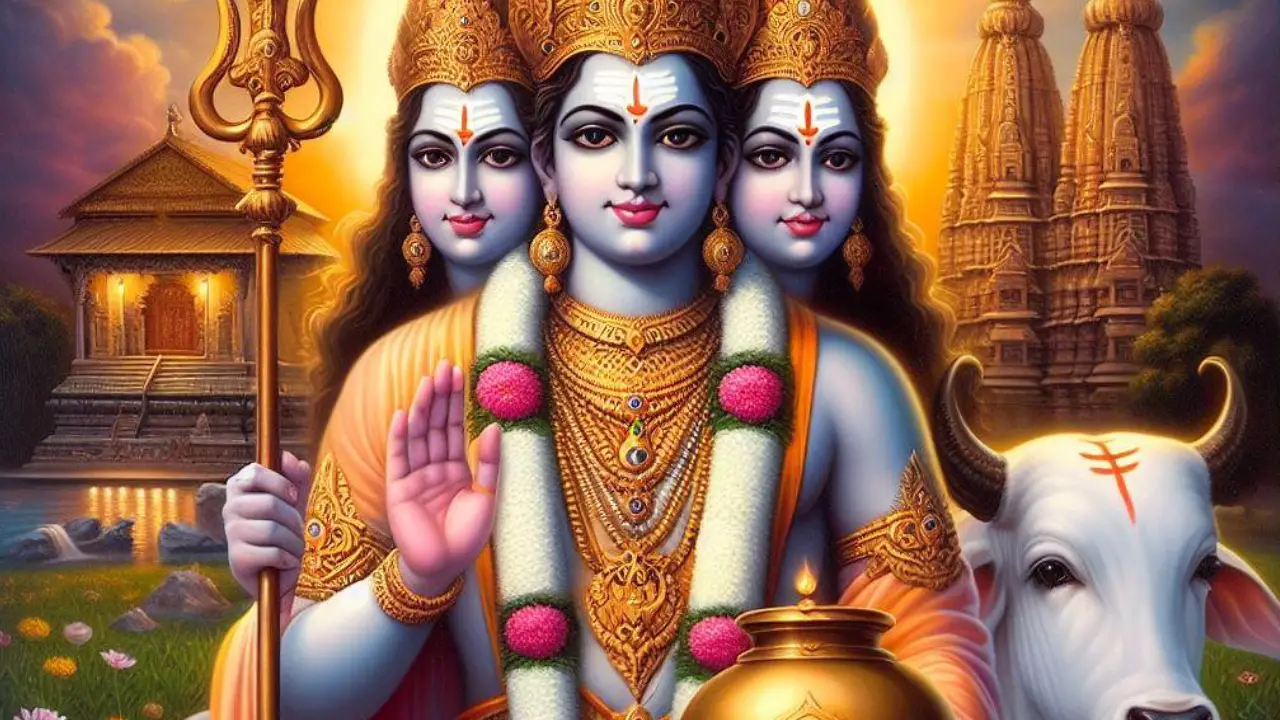Immersed in the rich heritage of Hindu mythology, the enigmatic figure of Lord Dattatreya stands as a symbol of unity, embodying the profound essence of the holy trinity. This blog post is a journey into the intricate symbolism that veils the three faces of Lord Dattatreya. It unriddles the spiritual significance that transcends the boundaries of time and space.
The Origin Story:
In the sacred scrolls of myth, Lord Dattatreya was born to the sage Atri and his devoted wife Anasuya. The divine trinity—Brahma, Vishnu, and Shiva—intertwined their cosmic energies to manifest in the ethereal form of this celestial being with three faces. Each visage, a facet of the cosmic order and divine energy, weaves a narrative that goes beyond the tangible.
Face of Brahma: Creator of Existence
The first face, akin to that of Lord Brahma, is the canvas upon which the strokes of creation are painted. It symbolizes the genesis of existence, the birth of life, and the perpetual cycle of creation. Lord Dattatreya, through this face, becomes the muse that beckons us to tap into our wellspring of creativity, encouraging us to embark on journeys of self-discovery and uninhibited expression.
Face of Vishnu: Preserver of Balance
The second countenance mirrors that of Lord Vishnu. It embodies the preserving force that maintains equilibrium in the vast expanse of the cosmos. Lord Dattatreya, in this aspect, imparts the wisdom of balance. It teaches us how to gracefully navigate the undulating tides of life.
Face of Shiva: Transformer of Existence
The third face, resonating with the essence of Lord Shiva, encapsulates the transformative force in the universe. It is the visage that symbolizes the cyclical dance of destruction and rebirth, underscoring the inevitability of change. Lord Dattatreya, through this face, beckons us to embrace change as an integral and inevitable part of our journey.
Unity in Diversity: Symbolism of Trinity
While distinct, the three faces of Lord Dattatreya harmoniously merge into one, embodying the essence of the cosmic forces. This trinity serves as a potent reminder of the interconnectedness of creation, preservation, and transformation—a testament to the seamless coexistence of these divine aspects in the grand tapestry of existence.
The Four Dogs: Guardians of Dharma
In various depictions, Lord Dattatreya is accompanied by four dogs. They are the symbolic guardians of the four Vedas—Rigveda, Samaveda, Yajurveda, and Atharvaveda. These loyal companions represent vigilance, loyalty, and an unwavering commitment to upholding dharma (righteousness).
Dattatreya’s Alms Bowl: Detachment and Charity
In the divine iconography, Lord Dattatreya is often portrayed carrying an alms bowl, an emblem of detachment from material possessions and a poignant reminder of the importance of charity. The alms bowl symbolizes the act of giving without attachment, a virtue that transcends the fleeting desires of the material world.
Envision the philanthropist, inspired by Lord Dattatreya’s teachings, selflessly contributing to society, understanding that true wealth lies in the well-being of others.
As we navigate through the profound symbolism behind the three faces of Lord Dattatreya, let us collectively embrace the timeless lessons of creation, preservation, and transformation in our own lives. Share your insights, personal anecdotes, or reflections in the comments below, and let’s embark on this spiritual expedition together.

